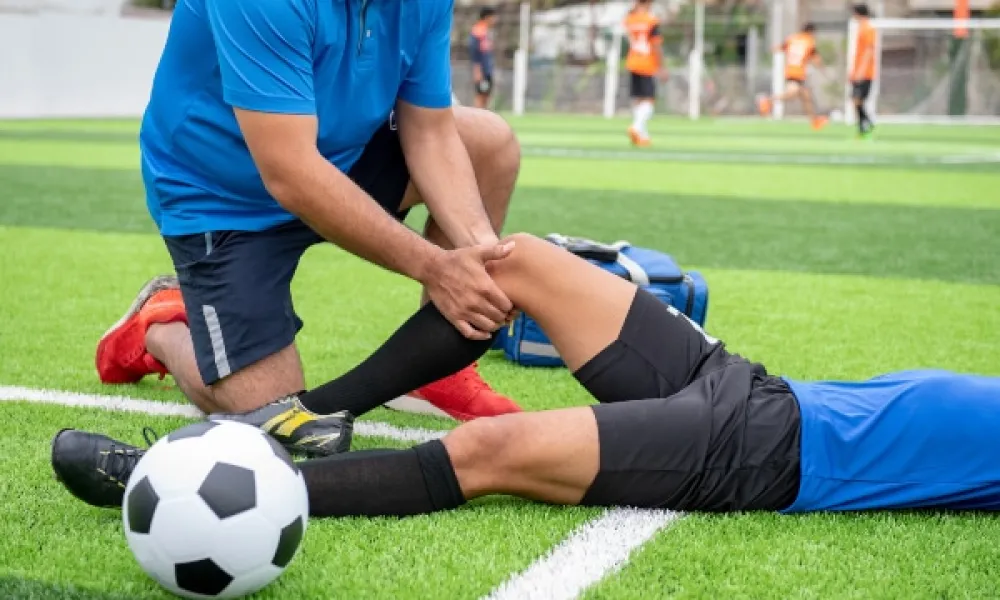The anterior cruciate ligament (ACL) tear is a common knee injury that can have a significant impact on an individual's mobility and athletic performance. While ACL tears can occur in various situations, several risk factors contribute to their likelihood. In this blog post, we will delve into the key factors associated with ACL tears, including gender, alignment, sports participation, single sport specialization, quadriceps versus hamstring imbalance, and other contributing factors.
1. Gender
One of the most well-documented risk factors for ACL tears is gender. Studies consistently show that female athletes are more prone to ACL injuries than their male counterparts, particularly in sports involving cutting, pivoting, and jumping movements. Hormonal and anatomical differences, such as increased joint laxity, narrower intercondylar notch, and varying neuromuscular control, contribute to the higher risk for women. However, it is crucial to note that men can also experience ACL tears, and preventive measures should be taken by both genders.
2. Alignment
The alignment of the lower extremities plays a significant role in ACL injury risk. Individuals with specific lower limb alignment characteristics, such as a larger Q-angle (the angle formed between the quadriceps muscle and the patellar tendon), increased genu valgum (knock-knees), or excessive tibial torsion, may experience greater stress on the ACL. These factors can alter the distribution of forces acting on the knee joint, potentially increasing the chances of an ACL tear.
3. Sports Participation
Engaging in certain sports or activities significantly increases the risk of ACL tears. Sports involving sudden changes in direction, deceleration, or landing from jumps, such as soccer, basketball, volleyball, skiing, and football, pose a higher risk. Athletes participating in these activities should be particularly cautious and consider preventative measures to reduce the likelihood of ACL injuries.
4. Single Sport Specialization
While participating in sports offers numerous benefits, specializing in a single sport from a young age can contribute to the risk of ACL tears. Intense training regimens, repetitive movements, and inadequate recovery periods can lead to muscular imbalances and fatigue, placing excessive stress on the ACL. Encouraging multi-sport participation and incorporating cross-training exercises can help mitigate these risks and promote overall athletic development.
5. Quadriceps vs. Hamstring Imbalance
Muscular imbalances between the quadriceps and hamstring muscles are another contributing factor to ACL tears. A significant disparity in strength or coordination between these muscle groups can disrupt the stability of the knee joint and increase vulnerability to injury. Strengthening exercises that target both the quadriceps and hamstrings, along with proper training techniques, can help minimize this risk factor.
6. Other Factors
In addition to the aforementioned risk factors, several other elements can increase an individual's susceptibility to ACL tears. These include:
a) Previous injury: A history of ACL tears or knee injuries increases the likelihood of subsequent tears.
b) Poor landing mechanics: Improper technique during landings, characterized by stiff-legged landings or excessive knee valgus, can contribute to ACL injuries.
c) Equipment: Wearing ill-fitting or inadequate protective gear, such as shoes or knee braces, can affect joint stability and increase the risk of injury.
Understanding the risk factors associated with ACL tears is crucial for athletes, coaches, and healthcare professionals alike. By recognizing these factors, appropriate preventive strategies can be implemented to reduce the incidence of ACL injuries. Successful ACL injury prevention programs have been designed that work on muscle balance, coordination, and landing mechanics. These programs are incorporated into the normal sports warm up and have been shown to lower the prevalence of ACLs by 70%. You can learn more at: http://seattlepediatricsportsmedicine.com/
If ACL injuries do occur, it is important for you and the surgeon to discuss these risk factors to optimize the outcome after surgery. Dr Merritt evaluates all of these risk factors to develop a targeted treatment plan after a knee injury. In some cases these additional risk factors need to be minimized by correcting alignment, adding additional support, or just the discussion of appropriate training and therapy for ACL injury prevention.
The bottom line is: in order to optimize the outcome after ACL surgery, the patient-specific risk factors need to be understood and occasionally corrected. Make sure you find a surgeon that tailors treatment to your unique body and situation.

